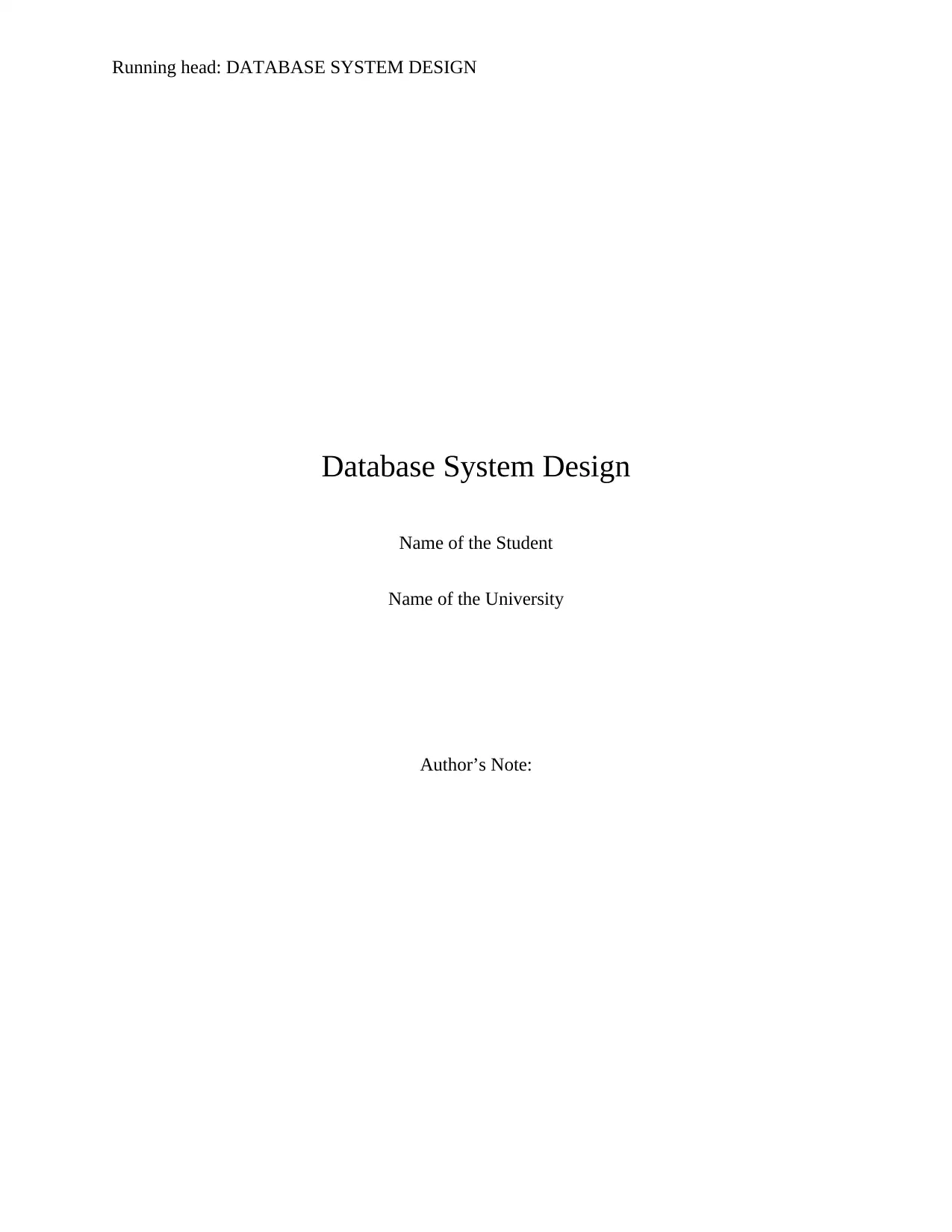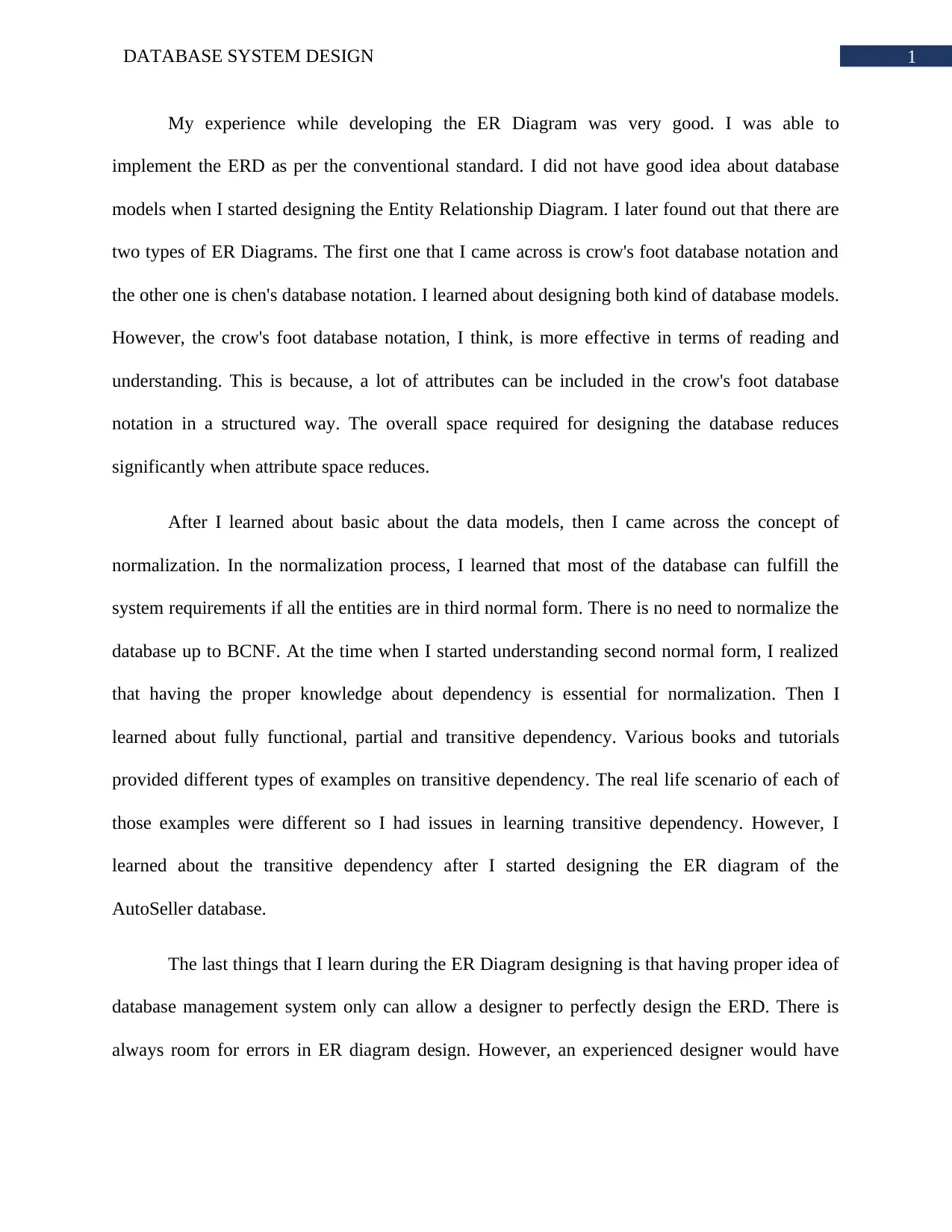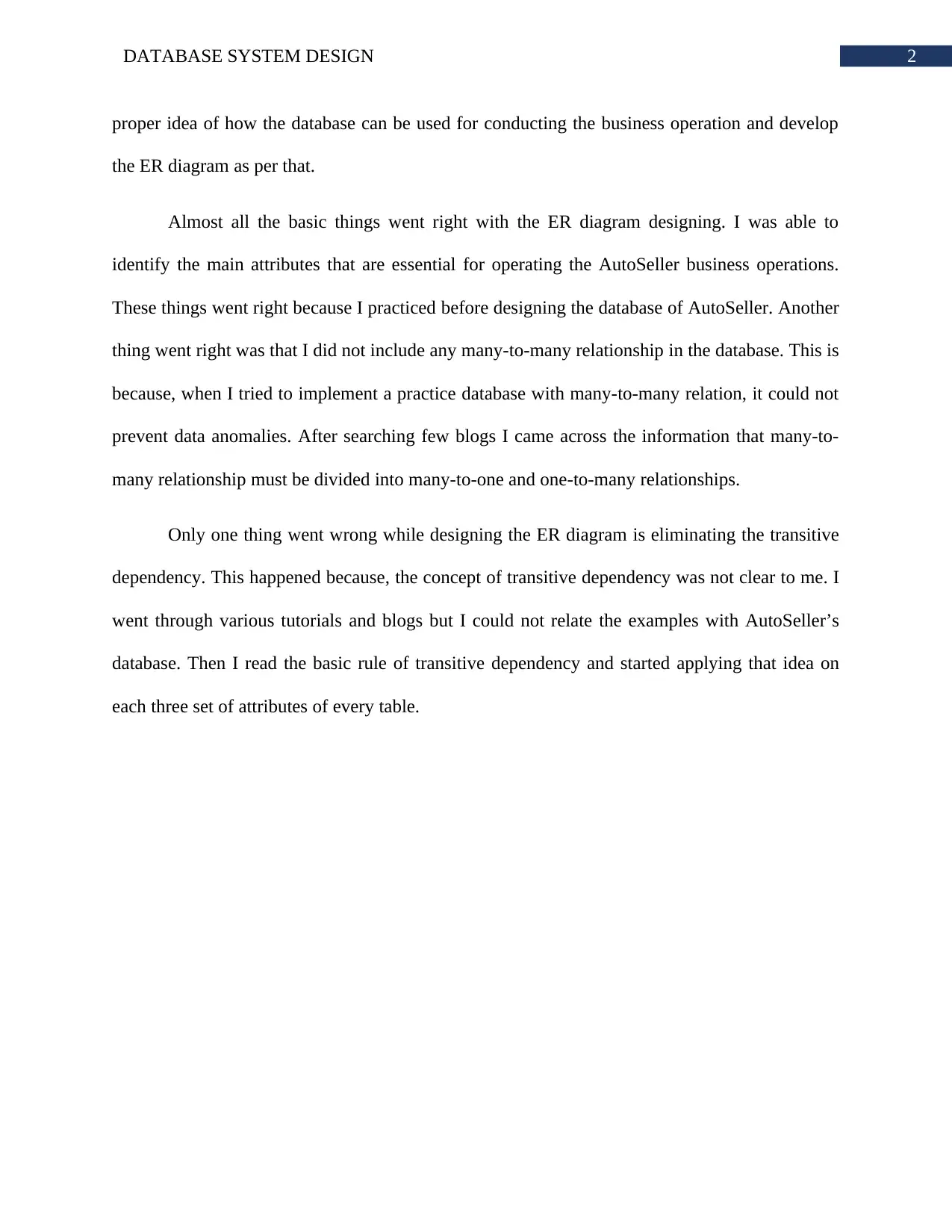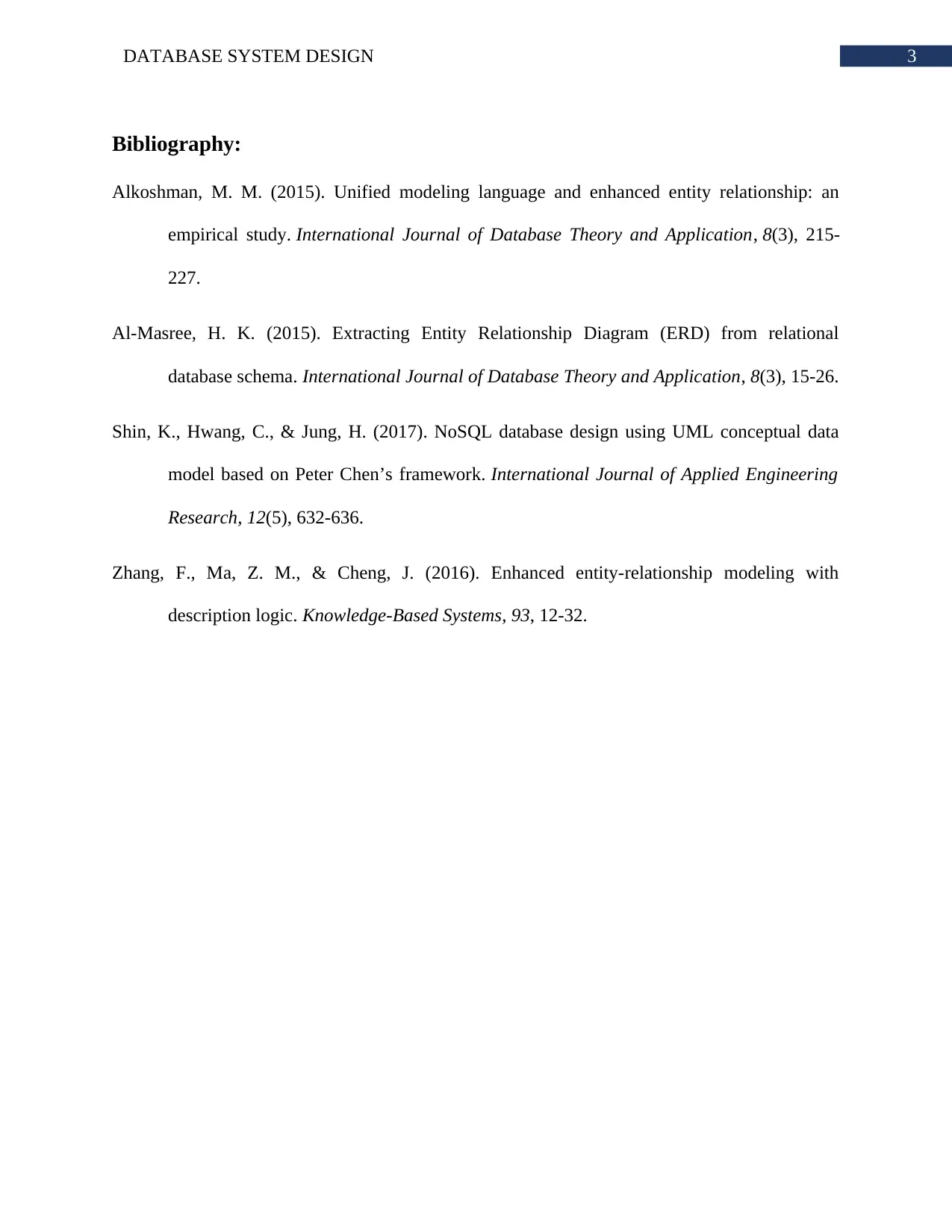Database System Design: Detailing the ER Diagram Development Process
VerifiedAdded on 2023/04/24
|4
|733
|305
Essay
AI Summary
This essay reflects on the experience of developing an Entity Relationship Diagram (ERD) for a database system, specifically focusing on the AutoSeller database. The author discusses their learning journey, starting from initial confusion about different ERD notations (crow's foot and Chen's) and progressing to understanding database normalization, particularly the third normal form. The essay highlights the importance of understanding dependencies (fully functional, partial, and transitive) and acknowledges initial difficulties with transitive dependency. It also emphasizes the critical role of database management system knowledge in effective ERD design. The author notes successes in identifying key attributes and avoiding many-to-many relationships, while also addressing a mistake in eliminating transitive dependency due to an initial lack of clarity on the concept. The essay concludes with a bibliography of resources used during the learning process. Desklib provides access to similar assignments and study tools for students.
1 out of 4








![[object Object]](/_next/static/media/star-bottom.7253800d.svg)